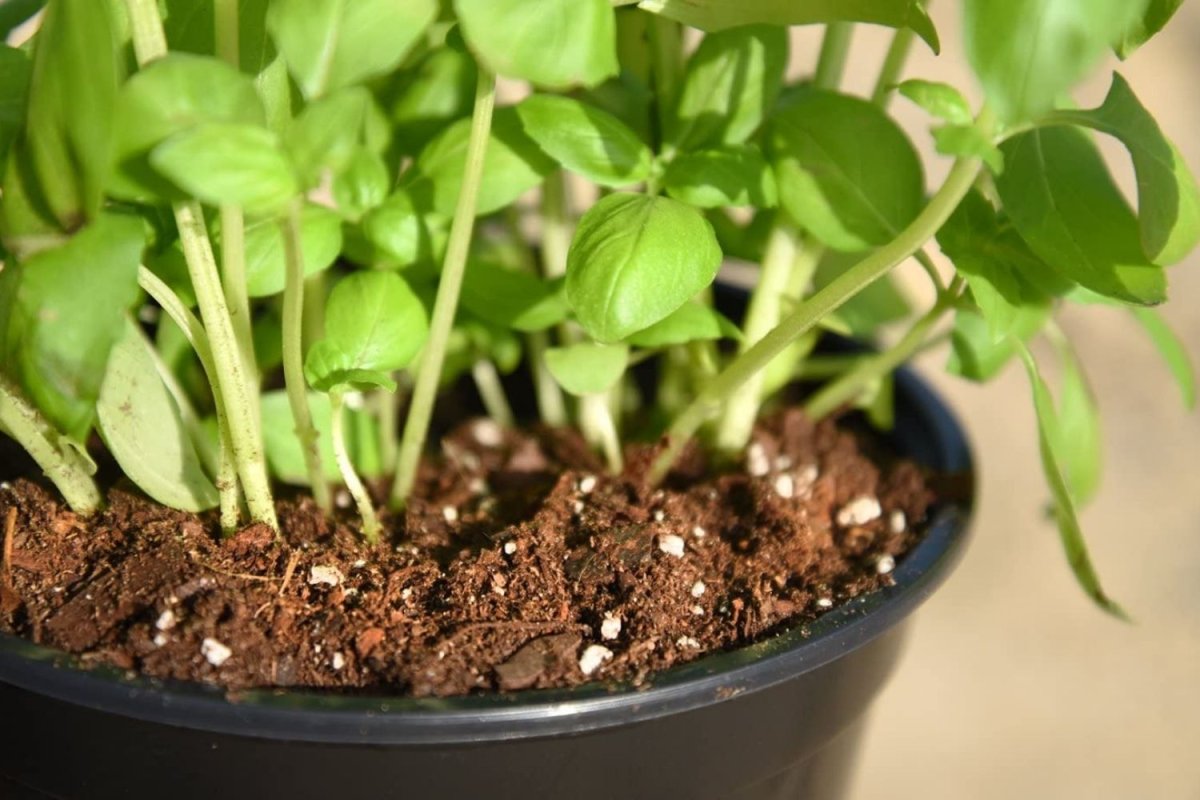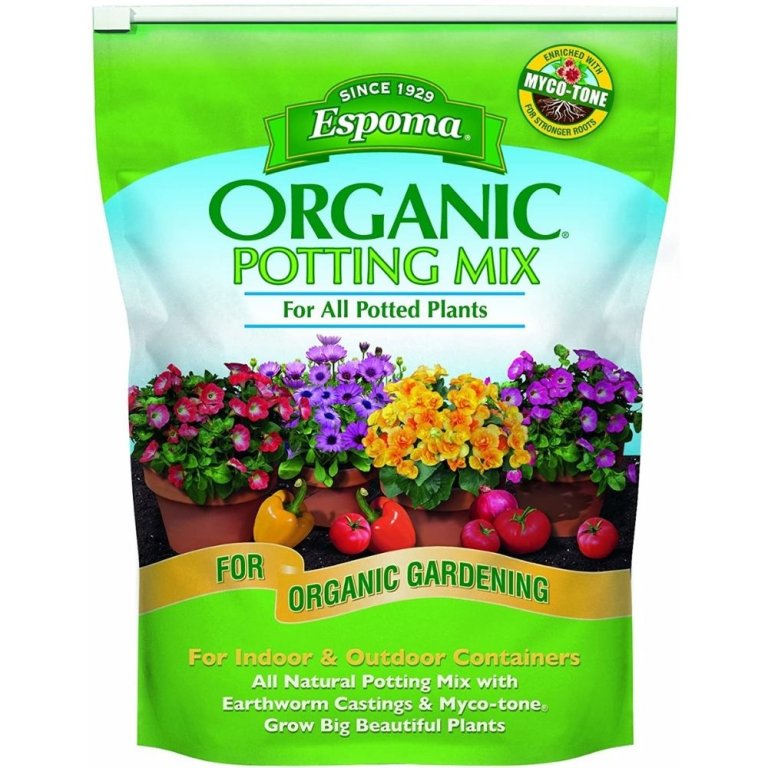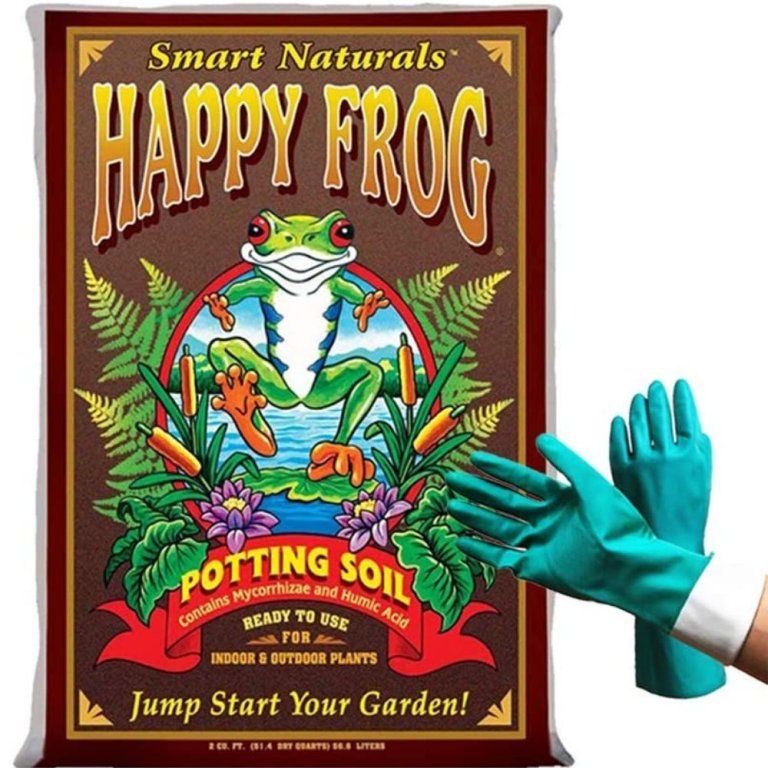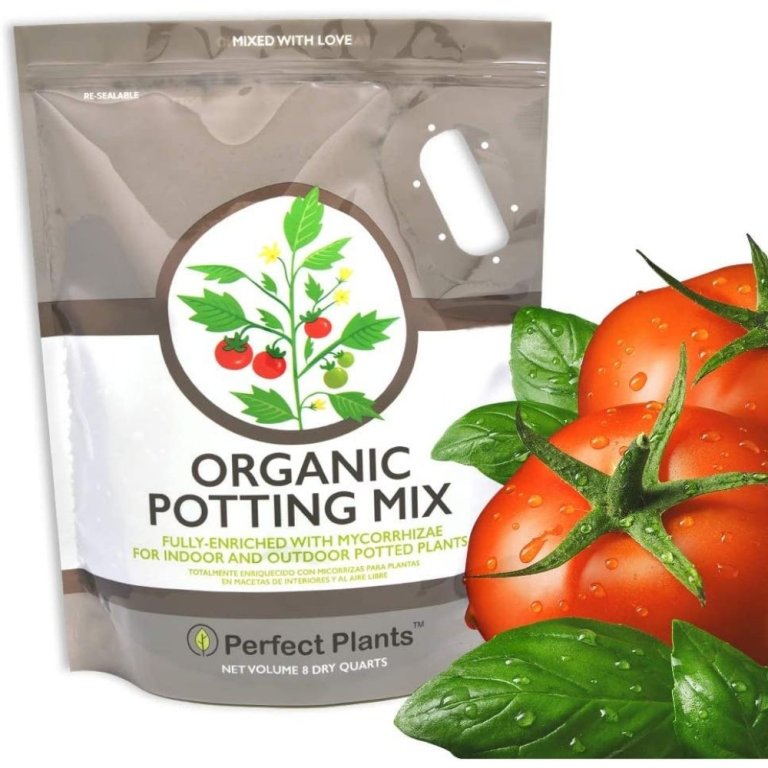
We may earn revenue from the products available on this page and participate in affiliate programs. Learn More ›
The most common spot for growing vegetables is outdoors during warm weather, where the plants can soak up long days of sunshine and send their roots deep into the soil for nutrients. However, not everyone has an outdoor garden, and some folks want to grow tasty produce all year long. Fortunately, growing vegetables indoors is a fun endeavor that can yield an abundance of fresh, healthy produce.
Utilizing a sunny window or grow lights will help indoor vegetable plants develop, but just as important is starting with the right soil. The best soil for growing vegetables indoors will vary depending on the type of plant and whether the gardener wants to grow organically. Ahead, learn what to look for when buying a potting soil mix for growing vegetables indoors, and find out why the following are among gardeners’ top choices.
- BEST OVERALL: Espoma AP8 8-Quart Organic Potting Mix
- RUNNER-UP: Fox Farm Happy Frog Organic Indoor Potting Soil Mix
- BEST ORGANIC: PERFECT PLANTS Organic Indoor Potting Mix All Plants

What to Consider When Choosing the Best Soil for Growing Vegetables
A good growing mix for vegetables should be lightweight to prevent the soil from packing down and also free from contaminants. Avoid bringing in dirt from outdoors, which often contains insects and pathogens that can quickly overwhelm an indoor gardening container and lead to plant failure. To get off on the right foot, consider using a commercial soil mix specially designed for indoor growing.
Type
Not all soil types are appropriate for growing vegetables. Some are better suited to growing flowering plants, potted trees, or houseplants. The terms “soil mix” and “growing mix” are interchangeable, but most indoor mixes do not contain actual dirt. Instead, they feature an optimum blend of ingredients that provides indoor plants with the best chance to survive and thrive.
- All-purpose: An all-purpose indoor soil mix may or may not contain a fertilizer to help establish vigorous plant growth, and it may not be the best choice for indoor vegetables. If an all-purpose mix contains fertilizers to boost houseplants, it may result in heavy foliage growth rather than vegetable production. Vegetable plants need nutrients that will encourage blossom development because blossoms are necessary for vegetable growth. An all-purpose mix without any fertilizers may be better because a vegetable-appropriate fertilizer can be added later as needed.
- Organic mix: Many indoor gardeners wish to grow organic food—free from all chemicals. Organic soil mix will contain only natural nutrients, such as bone meal or fish emulsion, rather than chemical fertilizers.
- Seed-starting: For the best germination results, seed-starting mediums should be sterile because new seedlings are tender, and the presence of bacteria or other contaminants can quickly destroy a whole flat of tiny seedlings. Seed-starting mix is often very light and fluffy, which allows the seedlings to send down roots easily.
- Plant specific: Even among vegetables, different varieties have different nutritional needs. If the gardener plans to grow only tomatoes, for instance, a tomato-specific soil that’s pH-balanced for these fruits is likely to produce strong, healthy plants. A plant-specific soil mix isn’t a must, however, because plant-specific fertilizers can be added to the growing mix after planting.
Ingredients
Indoor growing mixes usually contain a variety of lightweight natural ingredients. Most indoor growing mixes feature a combination of peat moss, coconut fiber (coir), vermiculite, and/or perlite. They may also contain a range of nutrients. Both vermiculite and perlite provide vital aeration to the roots, which is essential for growth. Even in the best planters, plant roots have limited space to grow, so the growing mix must be nutritious and also drain well.
Nutrients
Outdoors, a vegetable plant has plenty of room to send out roots in search of nutrients, but in a container, nutrients are quickly absorbed, so plan on using a soil mix that contains time-released nutrients or, alternately, plan on adding fertilizer periodically throughout the growing period. Soil mixes contain various amounts of fertilizer based on the desired vegetable being grown. Chemical fertilizer content is labeled by ratio using three numbers, such as 10-10-10. The first number indicates the amount of nitrogen, the second shows the amount of phosphate, and the third indicates the amount of potash in the mix. Mixes that contain organic fertilizers, such as bat guano, do not list a ratio. When buying a mix with chemical fertilizers, use the following as a general guideline.
- Leafy vegetables: A balanced fertilizer ratio, such as 14-14-14, or 10-10-10, is optimal for growing spinach, lettuce, and other leafy greens.
- Root vegetables: Potatoes, carrots, and other tubers benefit from a fertilizer with slightly less nitrogen, such as a 5-10-10, to produce robust and edible root systems.
- Above-ground vegetables: Many above-ground veggies, such as cucumbers and squash, benefit from a balanced fertilizer, while acidic plants, such as tomatoes, will thrive on fertilizer with slightly higher phosphate, such as a 2-3-1 blend.
Moisture Retention
Sphagnum peat moss naturally absorbs and retains moisture, making it a top choice for many indoor growing mixes, but some manufacturers include an additional wetting agent, such as water-absorbing crystals, to help keep the mixture from drying out. When saturated, the crystals swell and then slowly release water into the growing medium as the medium dries out. This can help prevent both over- and under-watering, which can lead to weak plants. Depending on the amount of moisture-retaining ingredients, the soil may actually swell in size when watered and then shrink as it dries out. Where consistent moisture isn’t a concern, such as in self-watering planters, it’s less important to have a growing mix that retains water and gradually releases it.
Fungal Growth
Most indoor growing mediums do not contain antifungal ingredients, and some contain beneficial fungus in the mushroom family. If the growing medium includes a nutritious, mushroom-like component, it will often appear on the label as “mycorrhizal” or “mycorrhizae.” Unfortunately, unwanted types of fungus can also develop in the growing medium, especially if the mix doesn’t drain well, giving fungus a foothold and potentially ruining the crop. The solution is usually to water less often and allow the soil mixture to dry out slightly between waterings. Also, commercial antifungal sprays are available. Well-drained mixes that allow water to pass through easily are less likely to lead to unwanted fungus development.
Our Top Picks
To qualify as a top pick, indoor potting soil should be clean, resist compaction, and drain well. The best soil for growing vegetables indoors may vary depending on an individual gardener’s needs, but it should be the foundation for producing healthy, strong plants. It needn’t necessarily contain fertilizers, but if it does, they should be well suited to specific vegetable production. The following commercial soil blends vary by ingredient and cost, but they are all well suited for growing vegetables indoors.
Best Overall
Espoma AP8 8-Quart Organic Potting Mix
Pros
- Lightweight ingredients are less likely to compact
- Includes a mycorrhizal mixture to retain moisture
- Works in outdoor or indoor containers
- Versatile enough for all plant types
Cons
- Can retain too much moisture for some houseplants
- Small bag (but comes in sets of two to four bags)
Grow a bumper crop indoors with Espoma Organic Potting Soil, which contains a mixture of ingredients designed to help plants reach their highest potential. It features a base of sphagnum peat moss blended with perlite, alfalfa meal, and organic fertilizers, such as earthworm castings and yucca extract, for robust plant growth.
The potting mix is also enhanced with Myco-tone, Espoma’s proprietary mycorrhizal mixture of mushroom-like ingredients that help retain moisture in the soil to ensure the vegetables have a consistent supply of water. The potting mix comes in a 4.9-pound bag (other sizes may be available), and gardeners can use it to pot vegetables and various types of indoor plants.
Runner-up
Fox Farm Happy Frog Organic Indoor Potting Soil Mix
Pros
- Organic mix
- Includes soil microbes to help plants use nutrients
- Designed for container use
- Package includes pair of protective gloves
Cons
- For containers only
High-quality growing mix makes for a bountiful harvest, and Fox Farm’s Happy Frog Organic Indoor Mix can help an indoor gardener grow a bevy of beets or bushel of burpless cukes. Fox Farm incorporates soil microbes that encourage strong root development and improve plants’ nutrient uptake.
The soil mixture includes bat guano, earthworm castings, and aged forest products for larger and tastier produce. Happy Frog growing mix is pH adjusted, making it well suited to most types of vegetables, and the 51.4-quart bag comes with protective gloves to protect indoor gardeners’ hands while planting. All ingredients in the Happy Frog mix are organic and designed for container use.
Best Organic
PERFECT PLANTS Organic Indoor Potting Mix All Plants
Pros
- Completely organic and free of toxins
- Lightweight ingredients in mix for good drainage
- Includes natural soil enhancements such as mycorrhizae
- pH balanced to grow a range of indoor edibles
Cons
- Designed for indoor plants
- Small bag will not go far
For those looking to grow strictly organic indoor produce, PERFECT PLANTS Organic Indoor Potting Mix contains no chemicals or toxins for contaminant-free crops. The Perfect Plants mix contains lightweight ingredients, including sphagnum peat moss, perlite, composted pine bark, and coconut coir, for a growing mix that drains well and offers an optimal foundation for supporting large vegetable plants.
Natural soil enhancements, such as mycorrhizae (a mushroom-like fungi) and earthworm castings improve the mix’s nutrient value so plants can reach their full potential. This indoor mix is also pH balanced and designed to retain moisture to increase drought impact on plants. It comes in an 8-quart bag.
Our Verdict
For an all-purpose organic mix for growing vegetables, look to Espoma’s AP8 organic potting mix. Or choose PERFECT PLANTS organic indoor mix, which is packed with nutrients to help your herbs and vegetables grow and produce.
How We Chose the Best Soils for Growing Vegetables
Vegetables grow best in soil that combines lightweight, natural ingredients like coconut fiber (coir) with ingredients that help keep soil airy and retain some water, but not too much. If growing edibles in pots, it is especially important to choose a light potting mix meant for containers.
Food-producing plants need good nutrition to keep you in harvest, so we looked at whether a mix included nutritional ingredients like beneficial microbes or balanced fertilizer. Some of these come in the form of fungi, but unwanted fungi also can get into purchased mixes. Watering less often and allowing soil to dry between waterings can help keep bad fungi at bay. We also looked at soil type, since most home gardeners prefer either all-purpose or organic mixes for growing vegetables.
FAQs
Growing vegetables indoors offers a year-round harvest of fresh vegetables and a reliable source of produce. Those new to indoor vegetable gardening can find more info in the answers to these commonly asked questions.
Q. Can you grow vegetables indoors all year round?
Yes, but in addition to the right growing medium, vegetables need eight to 10 hours a day of direct sunlight. Place them in a sunny window and supplement light during short winter days with artificial grow lights.
Q. What do I need to grow vegetables indoors?
Adequate light, a good growing mix, and sturdy containers are essential for indoor vegetable production.
Q. Can I use regular potting soil for vegetables?
An indoor potting soil may suffice as long as it doesn’t contain high levels of nitrogen, which produces strong foliage but discourages blossom and veggie production.
Glenda Taylor is a freelance writer for the residential remodeling, homebuilding, and commercial roofing industries. She and her husband have been general contractors for over 20 years, and Ms. Taylor has written for leading media outlets, including the Houston Chronicle, SFGate, and the eHow Now Live Handyman Channel (a division of eHow.com) as well as National Association of Homebuilders. In addition to her construction experience, Ms. Taylor is a Master Gardener, a former real estate professional, a universal design enthusiast, and an advocate for green building practices. The recipient of Journalism and Marketing degrees from the University of Kansas and Bauder College respectively, she enjoys life on a farm in the Midwest with her husband and their “children”—five Saint Bernards!






